|
The Loire Valley wine region is the third-largest winemaking region in France, spanning over 170 picturesque miles. The vineyards are situated along the middle stretch of the Loire River (France’s longest river) in central France, which runs from east to west. Diversity in soil composition and climate along this stretch plays a vital role in the production and characteristics of the wine. There are over 4000 wineries and approximately 57,400 hectares of vineyards here. Loire Valley is also called the “Garden of France”. It is noted for its vineyards, floral gardens, fairytale castles, and historic towns. The Loire Valley is divided into five sub-regions, each with its characteristic grapes, appellations, and styles. There are 51 appellations of origin (AOP) and six protected geographical indications (IGP). Most of the wines produced here are pressed from a single varietal as opposed to most classic French wines that are blended. There are over 24 grape varieties in the Loire Valley, with the vast majority of production being white wine. The leading white varietals are Melon De Bourgogne, Chenin Blanc, and Sauvignon Blanc. The leading red varietals are Pinot Noir, Cabernet Franc, and Gamay. According to the Loire Wine Council (InterLoire), Loire Wines’ industry-leading efforts are being made toward environmental protection and sustainability. To quote: “2030 INDUSTRY PLAN: The Loire Wine Council, InterLoire, was the first to create a collective plan involving all wine industry players: the 2030 Industry Plan, outlining the future for the wine region, with a target of 100% of Loire Wines farms certified sustainable or organic by 2030. Today, 73% of wineries and 85% of surface areas are certified either organic or sustainable by High Environmental Value (HEV) or TerraVitis. AGROCLIMATIC ATLAS: Further, InterLoire worked with research and science teams to develop the Agroclimatic Atlas, an unprecedented educational tool designed to raise awareness of how climate change will impact the Loire region. The Agroclimatic Atlas shows projected changes in climatic and agroclimatic indicators specific to the emblematic grape varieties of the Loire region up to the year 2100. This tool highlights the vulnerability of vines to climate change and provides an opportunity for professionals to prepare for tomorrow’s climate while also encouraging action today.” Here is a selection of three Loire wines made by winemakers advocating sustainability. (samples) Domaine Vincent Carême Vouvray Le Clos AOC 2021 This winery is situated in the heart of Vouvray appellation, in the Touraine sub-region, and spans 37 acres. The estate, established in 1999, is owned by Vincent Carême and his wife, Tania. All of Domaine Vincent Carême’s wines have been certified organic since 2010. This wine is 100% Chenin Blanc. Grapes are sourced from 50-year-old vines grown in limestone, flint, and clay soil. The grapes are hand-harvested, and the wine is aged in oak barrels for 12 months. Nose: Bursting with notes of white flowers, honey, white stone fruit, and a touch of citrus. Palate: Apple, pear, racy acidity, notes of minerality, and honeysuckle. It is a bright and balanced wine with a hint of lemon zest on the finish. Alcohol: 13% SRP: $38 Pairing suggestions: Enjoy as an aperitif or with savory cheese, fish, and white meat. Domaines Landron la Louvetrie Muscadet Sevre-et-Maine Sur Lie AOP 2022 Domaines Landron is in La Haye Fouassière, in the Muscadet Sèvre et Maine appellation in the Pays Nantes sub-region in Loire Valley. Joseph Landron worked with his father for 12 years before continuing to work the estate on his own. All grapes are organically grown, and the wines are certified as both organic and biodynamic by Ecocert. This wine is 100% Melon De Bourgogne (Melon Blanc). Grapes are hand-harvested from blocks of 30 to 40-year-old vines and young vines under ten years. The soils in his vineyards range from clay, sandstone, and silica to gneiss and the unique metamorphic amphibolite.. This wine is aged on fine lees for six months in glass-tiled concrete vats without fining. Nose: White flowers, citrus, pear, apple, and minerality. Palate: This is a dry, savory, mineral-driven wine with crisp acidity. Notes of salinity mingle with green apple and pear. Refreshing! Alcohol: 12% SRP: $16 Pairing suggestions: Perfect for shellfish and oysters or any seafood. Roasted white meat, goat cheese, and sushi also pair well with this wine. Château de Plaisance Anjou ‘Sur la Butte’ 2021 Château de Plaisance is situated in the Anjou sub-region of the Loire Valley. Since 1995, their 25 hectares of vines have been certified organic, and in 2008, they transitioned to certified biodynamic practices. Vanessa Cherruau now owns the estate and continues the legacy that the Rochais family began. Her first vintage was 2019. The grapes for this wine are 70% Cabernet Sauvignon and 30% Cabernet Franc. Grapes are sourced from 35 year-old-vines located on Chaume hill with soil of schist, phtanite, and spilite. The wine is fermented and aged in concrete vats for 11 months. Nose: Vibrant aromas of red berries, violet, and sweet herbs.
Palate: Notes of dark berries, lively acidity, smooth tannins, herbs, and a pinch of minerality are a delight to sip. Alcohol: 13% SRP: $33 Pairing suggestions: Grilled tuna, roasts, hearty soups, and pizza. These wines will surely please your palate! Until next time… Cheers! Penina To leave a comment or if you have an inquiry, please contact me at [email protected] Bastille Day is celebrated in France every July 14th, and in many French-speaking regions worldwide, including the USA. The French also refer to this day as “Le Quatorze Juillet” (the 14th of July) or “La Fête Nationale” (the National Day) On July 14th, 1789. a group of revolutionaries stormed the Bastille prison in Paris, marking the start of the French Revolution. The Bastille was a symbol of the tyrannical rule of the Bourbon monarchy. Without going into a detailed history lesson, suffice it to say King Louis XVI and his wife Marie Antoinette were overthrown, ending the “Ancien Régime.” The Bastille prison was torn down by the order of France’s new revolutionary government, with the last stone removed in 1790. King Louis XVI was publicly beheaded on January 21st, 1793, making him the only French king to ever be executed. Marie Antoinette met the same fate at the guillotine on October 16th, 1793. Although it was a violent time, Bastille Day is celebrated in France with parades, fireworks, food, wine, and dancing. And even though I never need a reason to pour a glass of wine, it’s a perfect time to open a bottle of French wine and toast Bastille Day! Here are three wines that will tickle your palate on Bastille Day or any day of the year! C’EST LA VIE Pinot Noir-Syrah Pays d’Oc IGP 2020 This brand was created by Maison Albert Bichot. The Bichot family was established in Burgundy in 1350. Founded in 1831, Domaines Albert Bichot currently owns six estates throughout Burgundy. This wine is a blend of 60% Pinot Noir and 40% Syrah, with grapes sourced from the Languedoc-Roussillon. It is vinified and finished in stainless steel. Nose: Floral notes, red berries, and a hint of spice. Palate: Vibrant and smooth with strawberry, raspberry, ripe cherry, and a dollop of spice. Alcohol: 13% SRP: $13 Pairing suggestions: Enjoy on its own or with grilled fish, meat, cheese, and light bites. Slightly chilled on a hot day, this wine is quite refreshing. Trenel Beaujolais Cuvée Rochebonne AOP 2021 Maison Trenel was founded in 1928 by Henri Claudius Trénel and is in the heart of the South Burgundy and Beaujolais wine regions. The grapes for this 100% Gamay are sourced from the regional appellation “Beaujolais,” east of the “Pierres Dorées” area, on three parcels east-oriented and facing the Mont Blanc. The wine is aged for five months in cement tanks and is unfined and lightly filtered before bottling. Nose: Fruity aromas, red berries, cherry, spice. Palate: Aromas segue onto the palate with crisp and juicy notes of strawberry, raspberry, cherry, and a touch of pepper lingering on the finish. Alcohol: 12.5% SRP: $21 Pairing suggestions: Soft cheese, cheese tarts, quiche, fish stew, seared tuna, and roasted chicken. La Perrière Mégalithe Sancere 2016 Saget La Perrière is a family-run company in the Loire Valley, France. With 890 acres of vines in the finest appellations and six estates, it carries on the tradition of nine generations dedicated to producing fine wines. The estate’s 106 acres of Sancerre vineyards (Sauvignon Blanc grapes) are in the Bannay, Verdigny, Saint-Satur, Crézancy, and Vinon districts. Megalithe is the icon wine of Saget La Perrière. The first vintage was produced in 1998. The goal of Megalithe is to showcase the beauty of aged Sauvignon Blanc. The grapes are hand-harvested, and “after a gentle pressing, 40% of the must is fermented in new 300-liter oak barrels from Allier. The wine stays in barrel for eight to nine months, and the lees are stirred regularly to give the wine weight and complexity. To preserve the character of Sauvignon, the other 60% of the must is vinified and matured with particular care in steel vats.” Nose: Elegant and complex aromas of honeysuckle, apples, apricots, stone fruit, vanilla, and a touch of flint. Palate: Rich texture with a beautiful balance of salinity and ripe fruit. This wine has so much character! Alcohol: 12.5% SRP: $45 Pairing suggestions: Enjoy as an aperitif or with lobster, seafood, goat cheese, and salads. Until next time… Joyeux jour de la bastille!
Cheers! Penina To leave a comment or if you have an inquiry, please contact me at [email protected] Although I love to sip rosé throughout the year, mild spring weather and flowers blooming makes it all the more enticing! The Chapoutier family is no stranger to producing rosés and many other wine styles. This iconic winery is located in the picturesque Rhône wine region in southeastern France. Michel Chapoutier is a seventh-generation oenologist and head of Maison M. Chapoutier, founded in 1808. Michel is one of Rhône’s most famous wine producers and is known worldwide for such wines as Hermitage, Chateauneuf du Pape, and Côte Rôtie. Michel's daughter, Mathilde, is also making a name for herself as an eighth-generation oenologist in the company. I recently had the pleasure of sampling their newly released 2023 rosés from Côtes du Rhône and Provence. M. Chapoutier Belleruche Rosé Côtes du Rhône AOP 2023 Belleruche means “beautiful beehive” in French and is named for the bees and hives that are part of the sustainable vineyards. Grapes for this blend are Grenache, Syrah, and Cinsault. The wine is aged in stainless steel vats for three to six months. Nose: Floral, strawberry, white peach, and flinty minerality. Palate: Aromas flow onto the palate with apricot, melon, and zingy acidity. Perfection! Alcohol: 13.5% SRP: $18 Pairing suggestions: Enjoy as an aperitif or serve with fish, shellfish, summer salads, crab quiche, or grilled white meat. Mathilde Chapoutier Côtes de Provence Sainte-Victoire AURISSO AOP 2023 The symbol on Mathilde’s labels is a beautiful compass rose, symbolizing the various wine regions she explored worldwide and her quest beyond the Rhóne Valley region. This wine is a blend of Grenache Noir, Syrah, Cinsault, and Rolle. Grapes are harvested from vineyards located east of Aix-en-Provence, at the foot of the Sainte-Victoire and Aurélien mountains in the commune of Pourcieux. The wine is aged for five months in stainless steel vats before bottling. Nose: Floral notes, red berries, and a touch of cherry. Palate: Fresh and crisp, with juicy red berries and a hint of strawberry and minerality lingering on the finish. Alcohol: 12.5% SRP: $20 Pairing suggestions: Great as an aperitif or with any fish or shellfish, grilled scallops, vegetable risotto, or light cheese board. Mathilde Chapoutier Côtes de Provence ORSURO AOP 2023 This wine is an interesting blend of mostly Grenache Noir, with Syrah, Cabernet Sauvignon, Cinsault, Clairette, and Rolle. The vineyards are located east of Aix-eProvence, at the foot of the Sainte-Victoire and Aurélien mountains. Aging takes place in stainless steel vats for five months. Nose: Light floral, citrus, and red berries. Palate: Strawberry, juicy peach, pink grapefruit, and subtle herbal notes. This is a lively and refreshing wine. Alcohol: 13% SRP: $28 Pairing suggestions: Enjoy on its own or with pasta salad, fish, shellfish, grilled white meat, or sushi. It is interesting to note that M Chapoutier’s wine labels are printed in Braille. It is Michel’s way of paying homage to Maurice de la Sizeranne (1857-1924), who lost his sight at age nine. Maurice was one of France’s most noted philanthropists who founded the Revue du Braille, perfecting the system of abbreviated Braille. Maurice and his family owned a small plot of land in the famous Hermitage appellation, where Chapoutier bought some prime Hermitage vineyards. He sources the grapes from here for one of his most renowned wines, Monier de la Sizeranne. The wine honors the de la Sizeranne family with a special nod to Maurice. M Chapoutier has been practicing biodynamic viticulture since 1990. All herbicides and chemical pesticides are prohibited, and the vineyards are sustained using only organic matter. Michel believes only healthy vines growing within a balanced ecosystem can make great wine. Until next time…
Cheers! Penina To leave a comment or if you have an inquiry, please contact me at [email protected] Several years ago, I wrote an article about Jean-Luc Colombo Winery. Recently, I received two of their wines, which sparked a desire to revisit the winery and its story. Jean-Luc Colombo winery is located in the appellation of Cornas in the northern Rhône Valley, France. Cornas is the smallest appellation in the Rhône Valley, consisting of approximately 300 acres, and is dedicated to producing only red wine from the Syrah grape. The Mediterranean climate and decomposed granite soils contribute to the richness and character of these wines. In addition to producing wine from vineyards in the northern and southern Rhône Valley, Jean-Luc Colombo also produces wine from vineyards in Languedoc and Provence. As a child, Jean-Luc spent considerable time helping his mother in her restaurant in Marseille, where he was always surrounded by good food and wine. Growing up with a successful restaurateur, Jean-Luc developed a discerning palate for wine. With a passion for science, Jean-Luc received a pharmacy degree and combined his love of Syrah and science by creating a wine laboratory in 1984 with his wife Anne, Centre Oenologique des Cotes du Rhone. Jean-Luc quickly established himself as a wine consultant for wineries throughout the Rhône Valley, including many top domaines. The Colombo family purchased their first vineyard in the early 1980s, planted with old Syrah vines, overlooking the village of Cornas, and fulfilled Jean-Luc’s dream of becoming a winemaker and viticulturist. In 1987, he produced the first vintage of Cornas “Les Ruchets,” which became the flagship cuvée of the domain. Their daughter Laure is also passionate about wine. She received a Bachelor’s degree in Viticulture and Oenology in Bordeaux (and interned at Château Haut-Brion for one year). She followed it up with a Master’s degree in Oenology from the University of Montpellier. Laure also experimented with some vinifications in the southern hemisphere. At this point, she told her father and mother that she was ready, and she joined the family estate in 2010 as their winemaker. Bees are an integral part of the estate. The Colombo family began harvesting grapes and honey with their first vineyard, Les Ruchets, which translates to “the beehives” in French. In addition to time spent producing outstanding wines, the Colombo family also pours their hearts and souls into maintaining a safe haven and ensuring the longevity of the bee colonies. Through education, the elimination of harsh pesticides, and the planting of nutritious flora, the honey bees live in a fruitful and biodiverse landscape, contributing to the health of the grapes and terroir. Interesting facts: 1) Honey bees pollinate more than 90% of flowering crops – including many of the fruit and food items we eat – so they play a vital role in our food supply. 2) Honey bee colonies typically consist of only one queen bee, several hundred drones (male bees), and thousands of adult female worker bees. The colony also contains developing eggs, larvae, and pupae. Above photos of bee colonies and Laure are courtesy of the winery. Due to environmental factors, the Colombo family began to see a depletion in the honey bees’ local and global population, causing Colony Collapse Disorder. This disorder threatens bees’ crucial role in agriculture, as it causes adult bees to abandon their hives and fly off to die. The cause of this disorder is unknown, and it has spread to over half of the U.S. states, with similar reports in parts of Europe, Brazil, and Canada. So, the Colombo family, together with their U.S. importer, Taub Selections, united two great passions—winemaking and beekeeping—to develop the Bee Helpful Program. For every purchase of a bottle of Jean-Luc Colombo’s Les Abeilles (meaning The Bees in French) Côtes du Rhône white or red, a donation is made to the UC Davis Department of Entomology in support of their research to help restore healthy honey bee colonies. Jean-Luc said, “Living in the middle of the vineyards in Cornas, we have always made it a point to honor and preserve this environment and to work in harmony with nature. It is essential that vines, insects, and animals of all hairs and feathers coexist and thrive. For many years, “organic” methods have been applied to the vine, and Laure Colombo launched in 2012 the organic certification process for our estate (officially called ECOCERT in Europe), effective since the 2015 vintage.” Let’s taste some wine! Jean-Luc Colombo Côtes Du Rhône Blanc “Les Abeilles” 2022 This delightful wine is a blend of traditional white southern Rhône grapes, 80% Claudette, and 20% Roussane. The grapes are hand-picked and fermented in stainless steel tanks. The Claudette is aged in tanks, and the Roussanne matures in two to five-year-old oak barrels for six months. Nose: Floral, white stone fruit, citrus, apple, and a touch of minerality. Palate: Crisp and refreshing with notes of peach, pear, and sweet lemon on the finish. Alcohol: 13% SRP: $18.99 Pairing suggestions: Seafood, grilled chicken, quiche, and a summer pasta salad. Jean-Luc Colombo Côtes Du Rhône Rouge “Les Abeilles” 2021 AOC This wine is 60% Granache, 30% Syrah, and 10% Mourvèdre. The grapes are grown on 25-year-old vines in the AOC Côtes du Rhône appellation and hand-picked at harvest. Aging takes place in stainless steel tanks for ten months before bottling. Nose: Ripe red fruit, violets, purple plum, and a touch of licorice. Palate: Silky with notes of anise, dark berries, dark cherry, and a dollop of spice. Alcohol: 13% SRP: $18.99 Pairing suggestions: Jean-Luc Colombo says, “This wine is food-friendly and pairs with everything from roasted chicken, lamb, pork, charcuterie, to assorted cheeses – best enjoyed with a spoonful of honey.” Enjoy these wines while supporting the Bee Helpful Program. It’s a win-win situation! Until next time…
Cheers! Penina To leave a comment or if you have an inquiry, please contact me at [email protected] The shortest day of the year is finally behind us, but winter has officially begun. Although I enjoy the beauty of a winter wonderland, I’m not a fan of the slush, ice, and frigid weather accompanying it. So, let’s chase the winter blues away with some white wines and dream of tropical beaches and warmer weather! Trenel Mâcon Villages AOP 2021 Maison Trenel was founded in 1928 by Henri Claudius Trénel and is in the heart of the South Burgundy and Beaujolais wine regions. The grapes for this 100% Chardonnay are sourced from vineyards in Mâcon and 26 villages in the area. The Mâcon Villages Trénel is produced on parcels facing south and southeast in Charnay-lès-Mâcon and Viré. This blend of different clayey soils with variable limestone ratio bestows the right balance on the wine, rich and subtle at the same time. Nose: White flowers, citrus, and apple. Palate: Aromas segue onto the palate with a rich mouthfeel, crisp acidity, and a refreshing finish of lingering citrus notes. Alcohol: 12.5% SRP: $28.99 Feudi di San Gregorio Greco di Tufo, DOCG 2020 Feudi di San Gregorio was established in 1986 by the Capaldo family and is one of Campania’s premier wine estates, located in southern Italy, near Mount Vesuvius in the tiny village of Sorbo Serpico within the Irpinia DOC. This wine is made with 100% Greco, a white grape variety grown mainly in Campania. The grapes for this wine are sourced from the chalky soils of Tufo, contributing to the wine’s minerality, freshness, and persistence. Nose: Beautiful floral notes, melon, citrus, and herbs. Palate: Lush notes of pink grapefruit, juicy pear, and lively acidity, with a touch of mint and balsamic mingling with the fruit on the finish. Alcohol: 12.5% SRP: $28 Oberon Napa Valley Sauvignon Blanc 2022 Oberon Wines is part of the Michael Mondavi Family portfolio. Tony Coltrin is the winemaker for Oberon Wines and is celebrating 50-plus harvests. Having the advantage of being a lifelong resident of Napa, Tony knows every expression of the valley and, specifically, which sub-zones produce Bordeaux grapes that are exceptional. His lifelong relationships with growers throughout Napa Valley are the very essence of Oberon’s quality and consistency. Tony selects top-quality fruit year after year from the finest wine-growing regions throughout Napa. This wine is a blend of 81% Sauvignon Blanc and 19% Sauvignon Musqué. The grapes are sourced from the warm Pope Valley and cool Carneros appellations. Both cold tank fermentation and 14% barrel fermentation are used to maximize the overall fruit expression. “The cold-fermentation in-tank helps us maintain the pureness of fruit and aromatics, and barrel fermentation adds a subtle creaminess and length.” Nose: Notes of tropical fruit, apple, minerality, and herbs. Palate: Aromas segue onto the palate with white stone fruit, honeydew, and nice acidity. Minerality and citrus linger on the finish. Alcohol: 13.7% SRP: $20 Mandrarossa Urra Di Mare, DOC 2021 Mandrarossa is a brand created by Cantine Settesoli, located in Menfi, Sicily, on the island’s southwestern side. Cantine Settesoli was founded in 1958, and it is the largest winery in Sicily and a source of ongoing research and innovative ideas. Mandrarossa is Settesoli’s top brand, which emerged in 1999. This wine is 100% Sauvignon Blanc sourced from vineyards that stretch along south and southwest-facing hills with clay and limestone soils, “a wine created from sea breezes.” 2010 was the first vintage for this wine. Nose: Floral, citrus, white stone fruit, and a hint of herbs. Palate: This refreshing wine is layered with citrus, apricot, peach, herbal notes, crisp acidity, sapidity, and minerality. Apricots linger on a long finish. Alcohol: 11.5% SRP: $19.99 Pairing Suggestions Enjoy the above wines as an aperitif or serve with raw fish, grilled fish, salads, sushi, white meats, light pasta dishes, and cheese platters. These white wines will drink beautifully all year long. And, if you’re missing warmer weather during the winter months, a glass of white wine and a little imagination can transport you anywhere! Until next time…
Cheers! Penina To leave a comment or if you have an inquiry, please contact me at [email protected] Bastille Day is celebrated in France every year on July 14th and in many French-speaking regions worldwide, including the USA. The French also refer to this day as “Le Quatorze Juillet” (the 14th of July) or “La Fête Nationale” (The National Day.) On July 14th, 1789. a group of revolutionaries stormed the Bastille prison in Paris marking the start of the French Revolution. The Bastille was a symbol of the tyrannical rule of the Bourbon monarchy. Without going into a detailed history lesson, suffice it to say King Louis XVI and his wife Marie Antoinette were overthrown, ending the “Ancien Régime.” The Bastille prison was torn down by the order of France’s new revolutionary government, with the last stone removed in 1790. And we all know the fate of Marie Antoinette. Although it was a violent time, Bastille Day is a celebration in France with parades, fireworks, food, wine, and dancing. And even though I never need a reason to pour a glass of wine, it’s a perfect time to open a bottle and toast Bastille Day! So, I’m celebrating with French rosé and sharing my favorite crab quiche recipe from Julia Child’s “Mastering the Art of French Cooking.” Fleur De Mer Côtes de Provence Rosé 2022 This rosé is from the Côtes de Provence, the largest appellation in Provence, located in southeastern France. The name of this wine means “flower of the sea,” paying homage to the lavender fields that blanket the landscape of Provence and thrive in the warm sun and fresh, crisp seaside air. Winemaker Florian Lacroux selected Cinsault, Grenache, and Carignan to form the core of this blend, supported by other Provençal grapes in a beautifully blended and layered rosé. Nose: Lovely floral aromas with hints of lavender, subtle red berries, white stone fruit, herbs, and minerality. Palate: White peach, raspberry, strawberry, melon, vibrant acidity, minerality, and a touch of salinity, with a dash of citrus zest on the finish. Fresh, lively, and playful! Alcohol: 13% SRP: $22 Pairing suggestions: Enjoy as an aperitif or pair with crab quiche, grilled seafood, veggie salads, or roasted chicken. Crab Quiche Recipe I began making this quiche in the early 1980s, and it always brings a smile and a contented sigh to those who eat it. I always use fresh lump crabmeat for this recipe and allow the quiche to cool slightly before slicing. Please forgive the stained pages, as I tend to occasionally splatter when cooking! I’m sure that Julia would have appreciated how well-worn this book is! Whether you’re celebrating Bastille Day or life in general, enjoy it with a glass of rosé and crab quiche! Your palate will thank me! Joyeux jour de la bastille! Until next time…
Cheers! Penina To leave a comment or if you have an inquiry, please contact me at [email protected] This morning I woke up in a “pink” mood inspired by a recent sample delivery. The box contained two bottles of rosé, one from California, the other from Languedoc Roussillon, and a variety of tinned fish sourced from Galicia, Spain. Perhaps canned fish has taken a backseat to eating freshly caught fish, but this writer happens to like tinned fish, especially sardines. Although it has been a while, I used to prepare sardine salad made from packed sardines in olive oil or mustard sauce and served it on crackers or toast as an appetizer with white wine. So, this sampling has inspired me to think outside the box again! Let’s talk about the wines. Josh Cellars Rosé 2022 Joseph Carr formed his own wine company in Napa Valley after spending a decade as a world-class sommelier and another decade as a wine industry executive. His dream was to have his own family-owned winery, so in 2005 he began making wines under the label ‘Joseph Carr.’ In 2007 Carr launched Josh Cellars as a tribute to his dad, Josh. Grapes for the Josh Cellar wines are sourced from top California wine-growing regions to create wines with character and complexity. This wine is a rosé blend made with undisclosed grape varieties. Nose: Flowers, red berries, and white stone fruit. Palate: Light and dry with notes of strawberry, citrus, white peach, and crisp acidity. Alcohol: 12.5% SRP: $14.99 Pairing suggestions: Enjoy as an aperitif, or serve with light appetizers, ceviche, fresh fruit, and tinned tuna straight from the tin, mixed in a salad or on crackers. Fleurs de Prairie Rosé 2022 Made by the family-owned Les Grands Chais de France, "Fleurs de Prairie" is named in celebration of the free-spirited wildflowers carpeting their vineyards in the South of France. The grapes for this wine are sourced from vineyards throughout the Languedoc region, some of which have vines that are 50+ years old. The blend for this wine is 43% Grenache Noir, 40% Syrah, 9% Carignan, 5% Cinsault, and 3% Mourvèdre. Nose: Floral, ripe red berries, citrus, and a hint of minerality. Palate: This is a dry, fresh and lively rosé with aromas segueing onto the palate with strawberry and a hint of melon. Crisp acidity and a touch of citrus linger on a long finish making this the perfect sipper at the end of the day. Alcohol: 13% SRP: $20 Pairing suggestions: Drink as an aperitif, or serve with light appetizers, salads, seafood, grilled chicken, and tinned sardines on toast. And now a word about the tinned fish! The Siesta Co. is based in California, but all of its tinned seafood is sourced from fisheries in Galicia, Spain. The fish is wild-caught and sustainably fished, such as using line poles to prevent overfishing. And each tin contains all-natural ingredients packed in organic extra virgin olive oil. White Tuna in Organic Extra Virgin Olive Oil Ingredients: Albacore tuna, organic extra virgin olive oil, sea salt Sustainably line caught through pole fishing to preserve the flavor and texture of the tuna while ensuring the seabed is not damaged. Sardines in Organic Extra Virgin Olive Oil Ingredients: Sardines, organic extra virgin olive oil, sea salt
Sustainably caught off the coast of Galicia, Spain, these wild, all-natural, bone-in scale-free sardines are hand packed individually. Siesta Co. products are available in 3-pack/5-pack and variety packs. There are five fish types to choose from. Pour a glass of rosé and enjoy these fish pairings. Your palate will thank me! Until next time… Cheers! Penina To leave a comment or if you have an inquiry, please contact me at [email protected] Château d’Esclans is an enchanting property situated in the heart of Provence, France, northeast of St. Tropez. In 2006, Sacha Lichine purchased the property. Sacha was born in Bordeaux and educated in America. Since age 23, he has worked in every aspect of the wine industry, including production and sales. With the purchase of Château d’Esclans, Sacha’s vision was to create the most outstanding rosés in the world. And with unerring determination, the Château is now home to the iconic rosé brand, Whispering Angel, and in its sixteenth vintage. The WineKnitter is no stranger to the beautiful rosés produced by Sacha Lichine and Château d’Esclans, which I have had the pleasure of reviewing in the past. Today I’m delighted to give a shout-out to Sacha’s latest creation, “The Pale.” This whimsical bottle is a nod to the roaring twenties and aligns with the mid-20th century cocktail party scenes. And it comes with a very friendly price tag! The PALE Rosé by Sacha Lichine 2021 Made with Grenache, Rolle Syrah, and Cinsault, the grapes are sourced from the best terroirs in the Vin de Pays/ IGP Var region. The vineyards are parallel to the Mediterranean coast and influenced by the fresh sea air of the French Riviera. Salty and sun-drenched soils contribute to a dry yet fruity character. Aging is on fine lees for five to eight months in stainless steel tanks contributing to a subtle creamy texture. Nose: White flowers, red berries, a hint of sweet citrus, and grapefruit. Palate: Fresh, dry, and lively with aromas that segue onto the palate. Notes of minerality and nice acidity mingle with honeydew, berries, and pink grapefruit on the finish. Alcohol: 12.5% SRP: $16.99 Pairing suggestions: Enjoy as an aperitif or serve with salads, appetizers, cheese, light pasta, or pizza. If you want to change up your rosé experience, try a spin on the classic spritz and make a rosé spritz. Or try this Provence Cooler, created by New York bartender Auriela Nossa and first published by Liquor.com. Provence Cooler
Ingredients: 3/4 ounce vodka 1/2 ounce lemon juice, freshly squeezed 1/2 ounce simple syrup 1 blackberry 2 basil leaves 3 ounces rosé Garnish: basil leaf Garnish: blackberry Steps: 1. Add the vodka, lemon juice, and simple syrup into a shaker. 2. Add the blackberry and muddle. 3. Add the basil leaves and ice and shake vigorously until well-chilled. 4. Add the rosé to the shaker, then strain over fresh ice into a Collins glass. 5. Garnish with a basil leaf and skewered blackberry. Happy sipping! Until next time… Cheers! Penina To leave a comment or if you have an inquiry, please contact me at [email protected] Daffodils, crocus, and hyacinth are in bloom, with leaves on the trees about to burst open. Spring is finally making an entrance! Spring also brings Passover and Easter this coming week. Unfortunately, since I’ve been working on a time-consuming project, I’ve had little time to pound the keyboard lately. So, I am reposting an article from last year that includes timeless wines and classic recipes to grace the table and please your palate. Easter Jean-Luc Colombo Cornas “Terres Brûlées” 2018 Jean-Luc Colombo winery is located in the northern appellation of Cornas in the Rhône Valley, France. Cornas is the smallest appellation in the Rhône Valley, consisting of approximately 325 acres, and is dedicated to producing only red wine from the Syrah grape. The Mediterranean climate and decomposed granite soils contribute to the richness and character of these wines. Terres Brûlées means “burnt earth,” which refers to the long hot days balanced by the cool nights. Grapes for this 100% Syrah are hand-harvested from 30+ -year-old vines. The wine is aged 21 months in oak barrels (10% new, 90% one-to-five-year-old barrels). Nose: Dark cherry, dark berries, plum, and baking spice. Palate: Rich with blackberry, plum, and black cherry, reminiscent of exotic jam. Notes of vanilla, cocoa, spice, and a trace of minerality linger on a long finish. An exceptional wine! Alcohol: 14.5% SRP: $63.99 Pairings: Roasted white meat, game, lamb, seared tuna, and hearty stews. At the age of seven, I tasted lamb for the first time. And after that, I insisted that my mother make lamb chops for me at least once a week. Seven years later, our family was invited to a traditional Greek Easter meal where I feasted on leg of lamb for the first time. I was hooked forever! Roasted Leg Of Lamb With Vegetables (serves 8 to 10) The beauty of this recipe is that you can add any vegetables you like to the pan. My favorites are small potatoes, baby carrots, and onions. Ingredients: One 5 to 6-pound trimmed bone-in leg of lamb 4 to 5 garlic cloves minced One tablespoon of olive oil Chopped fresh parsley, thyme, & rosemary (a tablespoon of each) One tablespoon of Dijon mustard Kosher salt and pepper to taste. Cut up veggies such as new potatoes, carrots, zucchini, and onions. Directions: Line a large roasting pan with aluminum foil and preheat the oven to 350℉. Pat lamb dry, and using a sharp knife, score the top side of the lamb, making shallow cuts all over. Combine the rest of the ingredients in a small bowl. Place lamb fat side up on a rack in the prepared roasting pan. Spread the garlic mixture evenly over the lamb, making sure to rub it into the scored cuts. (I like to use my hands to rub the mixture into the lamb.) Add a small amount of dry white wine to the bottom of the pan, and then add cut-up vegetables of your choice. Place pan in preheated oven and roast until it reaches an internal temperature of 135℉ or until desired doneness. Occasionally baste the vegetables and add more liquid to the pan if necessary. Let rest for 15 to 20 minutes before slicing. Note: Consult a chart for roasting time per pound to achieve doneness as to rare, medium-rare, etc. Passover Having sat through many family seders growing up, I endured the wine that was always served. It was a sickeningly sweet wine that insulted my palate even in my early youth. There had to be a better kosher wine! And over time, wine producers began making quality kosher wine. Alavida Malbec Organic and Kosher 2021 This 100% Argentine reserve-level Malbec was released in 2021 from Origins Organic Imports, owned by Anne Bousquet and her husband, Labid al Ameri. who also own Domaine Bousquet. They have been producing certified organic wines since 1997. This wine is USDA-certified organic and kosher, a first from Argentina. “Alavida” is a riff on “to life” in Spanish - itself a riff on the traditional Hebrew toast “L’chaim!”. Grapes for this wine are sourced from vineyards in the Andean foothills at 4000+ feet. 90% of the wine is aged in used oak and 10% in new oak. Nose: Dark cherry, dark berries, baking spice, earthy mushrooms, and floral. Palate: Aromas segue onto the palate with vibrant fruit, plum, smooth tannins, and a hint of fennel. Alcohol: 14.5% SRP: $19 Pairings: Charcuterie board, grilled or roasted meat, fowl, pasta, or veggie casseroles. Savory Passover Noodle Kugel (Serves 6 to 8) courtesy of 1,000 Jewish Recipes by Faye Levy This is a delicious kugel, unlike the sweet kugels you might be accustomed to. Ingredients: 8 oz. Passover noodles 4 to 5 tablespoons vegetable oil 2 large onions, chopped Salt and freshly ground pepper to taste 1 teaspoon paprika, plus a little more for sprinkling 2 large eggs, beaten Directions: Preheat the oven to 350℉. Cook noodles in a large pot of boiling salted water for about 3 minutes until almost tender. Drain, rinse with cold water, and then drain again. Transfer to a large bowl. Heat 3 to 4 tablespoons of oil in a large skillet over medium-low heat. Add onions and sauté for 15 minutes or until very tender and light brown. Add salt, pepper, and one teaspoon paprika, and sauté for about 5 minutes or until well browned. Cool slightly. Stir onion mixture into noodles. Adjust seasoning; the mixture should be seasoned generously. Add eggs and mix well. Oil a 2-quart baking dish and add noodle mixture. Sprinkle with the remaining tablespoon of oil, then dust with paprika. Bake uncovered for one hour or until set. Serve from the baking dish. Note: For a heartier kugel, add sautéed mushrooms and broccoli. Just Because! Saget La Perrière Blanc Fumé De Pouilly 2018 Saget La Perrière is a family-run company in the Loire Valley, France. With 890 acres of vines in the finest appellations and six estates, it carries on the tradition of nine generations dedicated to producing the best wines. More commonly known as “Pouilly Fumé,” the “Blanc Fumé de Pouilly” appellation is the original name of this 100% Sauvignon Blanc wine. Its classification is one of the oldest in France and goes back to 1937. The term “Blanc Fumé” (smoky white) refers to the thin smoke-colored layer covering the grapes at the time of harvest and the unique aromas of gunflint famous in the wines of Pouilly sur Loire. This wine is aged on fine lees for six months, then bottled and aged for six to eight months in the cellar. Nose: Floral, citrus, minerality, and a hint of herbal. Palate: Floral notes continue with ripe fruit, grapefruit, flint, minerality, and lemon zest on the finish. It is fresh and lively! Alcohol: 13% SRP: $34.99 Pairings: Enjoy as an aperitif or serve with seafood, grilled chicken, goat cheese, or light appetizers. Scallops with Cannellini Bean Purée (serves two) Double or triple the recipe to make more servings. This recipe is done in three stages but is worth the time and effort.
1) Bean Purée Ingredients: 1/2 cup canned cannellini beans, rinsed and well-drained. 1 teaspoon unsalted butter Salt and freshly ground pepper to taste. Directions: Place drained beans and butter into a food processor fitted with a metal blade and process until smooth. Season with salt and pepper to taste, and process again for 30 seconds. 2) Coulis Ingredients: 1 red bell pepper, seeded and diced 1 tablespoon olive oil 1 clove garlic, finely chopped (about 1/2 teaspoon) Salt and freshly ground pepper to taste Directions: Combine diced pepper, olive oil, garlic, and a pinch of salt and pepper in a food processor. Blend until liquefied. 3) Scallops Ingredients: 2 tablespoons coriander 2 tablespoons mustard seed 2 tablespoons black peppercorns 2 tablespoons pink peppercorns 2 tablespoons olive oil 4 dry sea scallops 1/2 cup of baby greens Directions: Preheat the oven to 400℉ Combine all spices in a spice or coffee grinder and grind to a powder. Pour into a shallow bowl. Heat olive oil in a nonstick ovenproof skillet over high heat until it sizzles. Dip both sides of the scallops in the spice blend and place them into the skillet in a single layer. Sear for about 3 minutes per side or until golden brown. Transfer the skillet to the oven and heat for 5 minutes. Divide and scoop the white bean puree into the center of each dish, and arrange two scallops on top of each mound. Drizzle with red pepper coulis and garnish each plate with greens. Of course, one can enjoy these wines and recipes all year round! Until next time… Cheers and bon appétit! Penina To leave a comment or if you have an inquiry, please contact me at [email protected] This past September, I toured the Côtes de Bordeaux region in France and had the opportunity to meet with many estate owners throughout its five appellations. Not only were the wines a treat for my palate, but the down-to-earth enthusiasm and passion for the land and all things wine were a constant presence and a joy to experience. My last day of this magical tour was with the Rey family, owners of Domaine des Graves d’Ardonneau. The fog was dense, and the air held an odd mixture of sweet blooms and smoke drifting from the fires burning in Bordeaux, but I was excited about the visit and ready to embrace this last adventure before returning home. Most of my time at Domaine des Graves d’Ardonneau was spent with Fanny Rey, whose primary role is export manager, although she likes to call herself a “poly worker.” In addition to export management, traveling, and arranging wine tastings, she works in the vineyards, helps her older brother in the cellar, and even drives the forklift. “I go where I’m needed,” Fanny said. She also divulged that she studied opera and International Business before returning to the Domaine in 2008. Fanny: “My brother knew at age seven that he wanted to be a winemaker. I didn’t want to be in the business and needed to explore other options. While away, I gained an appreciation for wine. Eventually, I realized that family, history, and heritage are important. It’s better at home.” When I asked Fanny what generation she is, she answered, “I don’t know exactly. We go back to the 18th century, but I am 4th or 5th generation for sure!” Domaine des Graves d’Ardonneau dates back to 1763. A legal document dated January 15th, 1763, proves that the family was settled here. Fanny: “Originally, it was a small village with five families. Little by little, my great-grandparents bought the existing houses and now it is just our family.” Fanny’s parents, Christian and Pascale, live at the Domaine, and Fanny and her brother Laurent live in their own homes nearby. Laurent studied at the Faculty of Oenology in Bordeaux and joined the Domaine in 2006 as a winemaker. Being is a family affair, everyone was busy, so it was catch as catch can with taking photos! Fanny explained more about the family’s history. Fanny: “Our history began with a woman. The maternal side was the strength of the family through several generations. This is important because it was usually passed from father to son, but not in our family. For generations, the business passed from mother to daughter. It wasn’t until my grandmother gave birth to my father that it changed.” I asked if any of the women made wine. Fanny. “There were no women winemakers in my family, but they helped in other ways. At one time there was a belief in France that if you allowed a woman in a wine cellar, it would not be good, and the wine would spoil. But, of course, that belief does not exist today!” And who makes the wine today? Fanny: “My grandfather, Simon, who passed away about 25 years ago, made wine. Now my father and brother are the winemakers, but mostly my brother. My grandfather (Simon) was called a heretic because he always harvested the grapes after everyone else, at least 15 days later. He said, “A good mature fruit will make a good wine. A good grape is one you want to eat.” That tradition is still used today with our harvesting. My grandfather felt it was important to go beyond what everyone else was doing. He came from Spain and began working in the Bordeaux area when he was 14.” Simon eventually met Huguette, daughter of Germaine and Remi, and once married, they worked together, expanding the domain in Huguette’s family. Sadly, Huguette passed away two days ago, shortly before this article was published. Simon named the domaine in the 1970s. And the first bottle of wine was produced under the Domaine des Graves d’Ardonneau label in 1973. Fanny: “Little by little, the wine business grew, and my grandparents began to bottle the wine and sell it in France. In 1982, my parents joined them, and they began selling the wine outside of France.” The domaine is located in Blaye, the largest of the five appellations in Côtes de Bordeaux. Blaye covers 6500 hectares located on the Gironde Estuary. The majority of vineyards here are cultivated on hillsides benefiting from ample sunshine conditions with a primarily temperate climate and a maritime influence. These fruit-forward wines also benefit from the rich terroir, with mostly clay-limestone soil around the town of Blaye. To the north, sand and gravel are suitable for Sauvignon Blanc, and more varied soils are in the southeast. Each estate is about 15 hectares, and red wine production dominates. Domaine des Graves d’Ardonneau is the exception to the rule regarding owning land in Blaye. What once was just a farm with less than ten hectares of vineyards, cereal grains, cows, chickens, and barrel making, is now 70 hectares of vineyards and an additional 30 hectares of land made up of surrounding forest to preserve the biodiversity in the vineyards. The average age of vines is about 30 years, with the oldest vines over 50 years old. They have an HVE-3 certification (high environmental value), the highest level given in France for the entire farm operation. Fanny: “We respect nature and use chemicals sparingly and with strict restrictions. Five weeks before harvest, no spraying is allowed on the vines. The chemicals used are so precise only small insects are affected. Everything else is untouched and unharmed.” The soil is clay and gravel at the top of the hills, and on the sides of the hills, it is clay and very powdery limestone. Fanny explained that when the soil is very dry, the limestone hardens like stone and helps to retain heat during the night. The valley has well-drained sandy soils. Below is a photo of the hardened limestone with copper inside. It is pretty heavy! The vineyards are comprised of the following grape varieties. White wines Sauvignon Blanc 9.70 hectares Colombard 0.06 hectares Red Wines Merlot 47.50 hectares Cabernet Sauvignon 5.10 hectares Cabernet Franc 1.50 hectares Malbec 0.50 hectares Domaine des Graves d’Ardonneau has 12 wines in its portfolio, two dry whites, four reds, one rosé, one sweet, three sparkling, and one limited edition. Their flagship white is a 100% Sauvignon Blanc, and they have two flagship reds, Cuvée Tradition, and Cuvée Prestige. We tasted four wines. Sauvignon Blanc 100% Five months in stainless steel vats. Aromatic, good acidity, fresh and well-balanced. Cuvée Prestige White 90% Sauvignon Blanc 10% Colombar Fermented in oak barrels and aged for eight months in new oak barrels. Very aromatic, complex and dry, with subtle tropical notes and white stone fruit. Cuvée Prestige AOC Red 80% Merlot, 10% Cabernet Sauvignon, 10% Malbec Aged 18 months. 30% in new oak and 70% in used oak. Full-bodied, light, and fruity with spice, cherry, dark fruit, nice acidity, and a touch of sour cherry on a long finish. Grand Vin AOC 65% Merlot, 25% Cabernet Sauvignon, 10% Malbec This special cuvée is not made every year. It is aged for 18 months in new oak barrels. A beautiful bouquet, concentrated and fruity with smooth tannins. These wines are worth seeking out. Check online to see where you can purchase them! Fanny talked about climate change and its impact on winemaking. Fanny: “Blaye is protected from many climate change issues, such as hail and frost, because we are close to the river. My father likes climate change because the grapes can mature longer. The intense heat began in the summer of 2003. We had some good years and some bad years. In 2007 we needed to take a different approach. We were observing three different levels of maturation on a vine. So we bought a sorting machine that senses and weighs the grapes, selecting only the mature grapes. This ensures a good quality wine. Concerning the lack of water, it is difficult, but we are lucky here because again, we are close to the river which provides microclimate conditions. But vines can still experience hydric stress. Our up-to-date technology makes it easier to address any issues. Blends will have to change because grapes are producing higher and higher sugar levels, especially Merlot.” Before ending the visit, Fanny drove me a short distance to walk in the vineyards and see their mill dating back to the 18th century. We climbed to the top of the mill, and I was greeted with breathtaking views of 20 hectares of vineyards and beyond. A video taken from the top of the mill is below, followed by a slideshow. The Domaine’s average production is 350,000 bottles/per year. 65% is sold in France, and the rest is mainly distributed in Europe, with a small presence in the USA, which they hope to change.
Fanny: “Our objective is to keep the quality high, prices low, and increase our volume.” Domaine des Graves d’Ardonneau’s motto: “A family…A passion…The expression of a terroir.” Until next time… Cheers! Penina All photos for this article are by Penny Weiss and copywrited. To leave a comment or if you have an inquiry, please contact me at [email protected] |
Categories
All
|

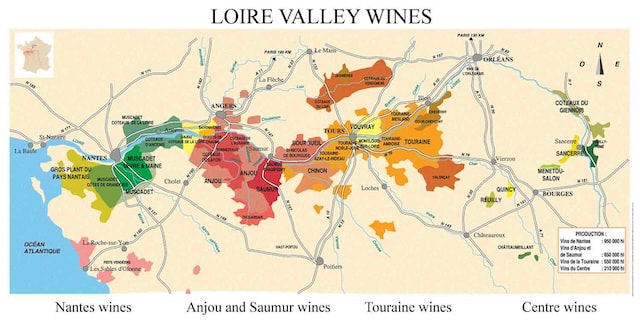
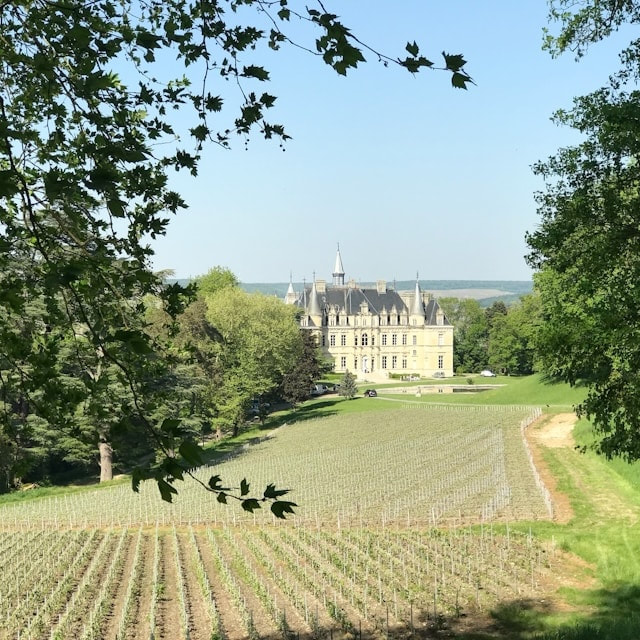
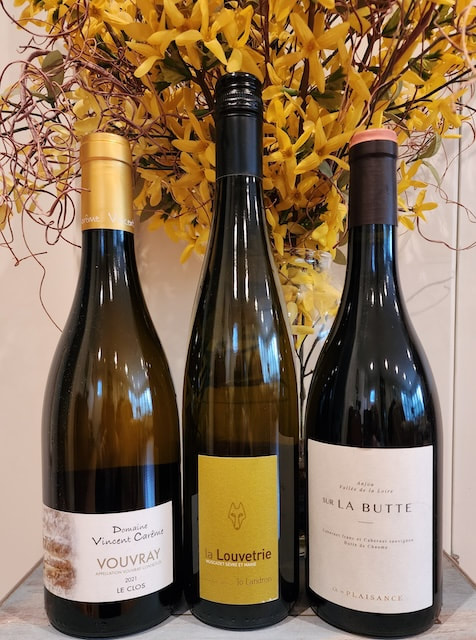
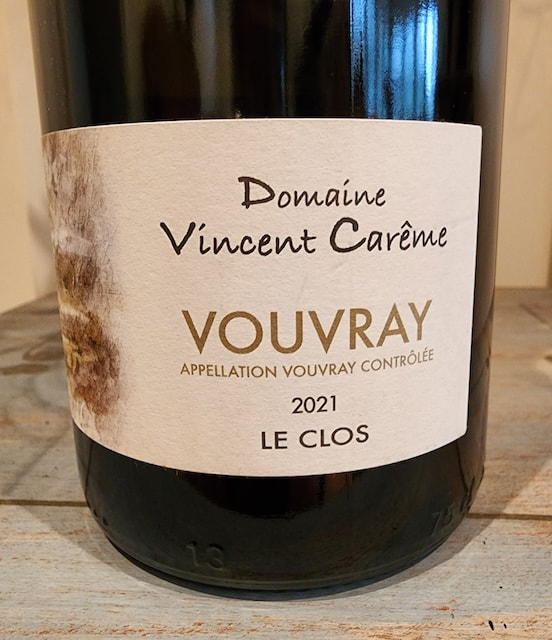
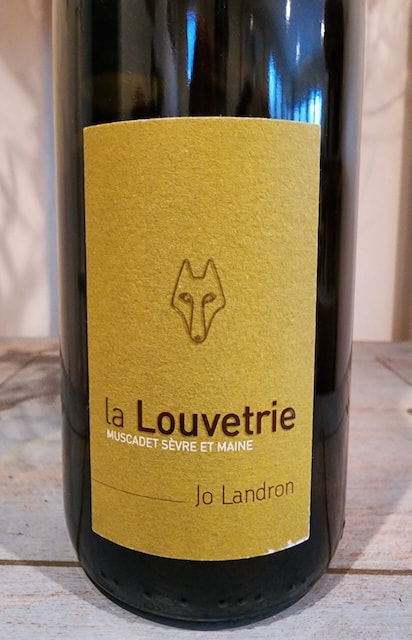
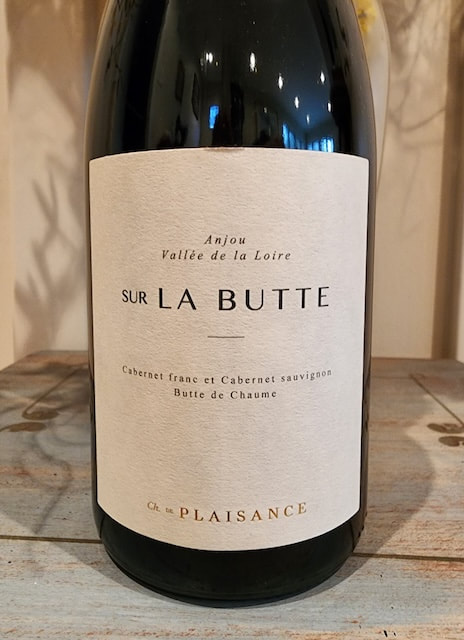
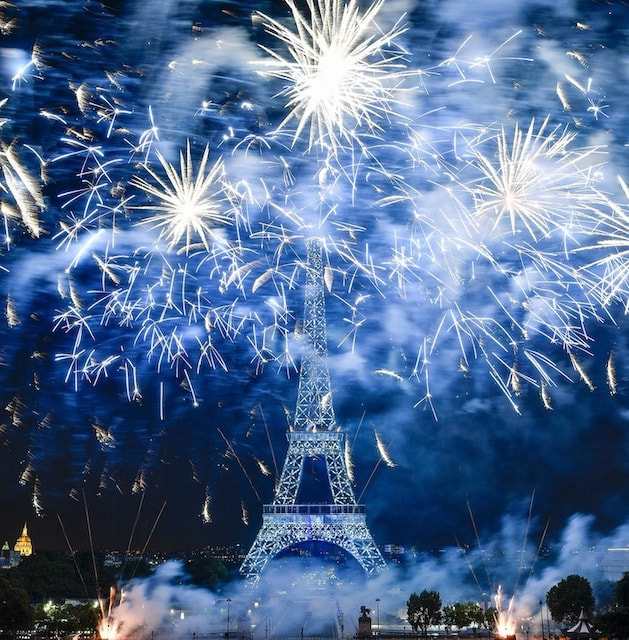
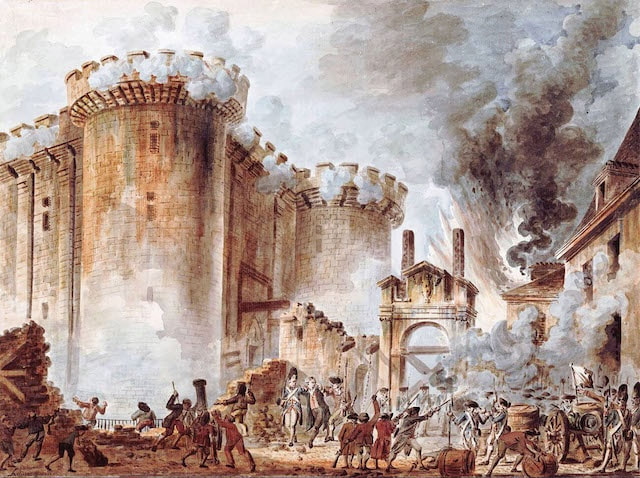
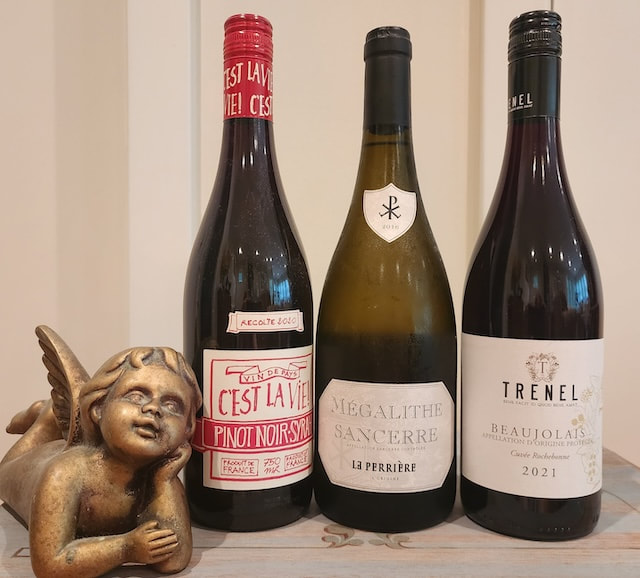
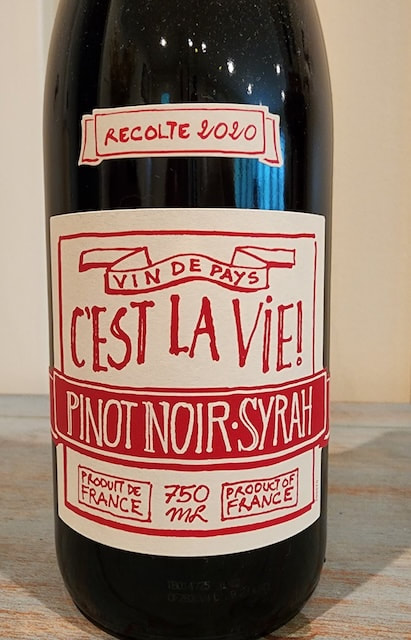
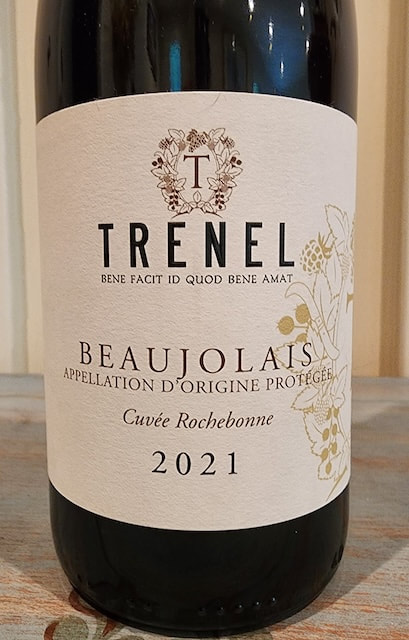
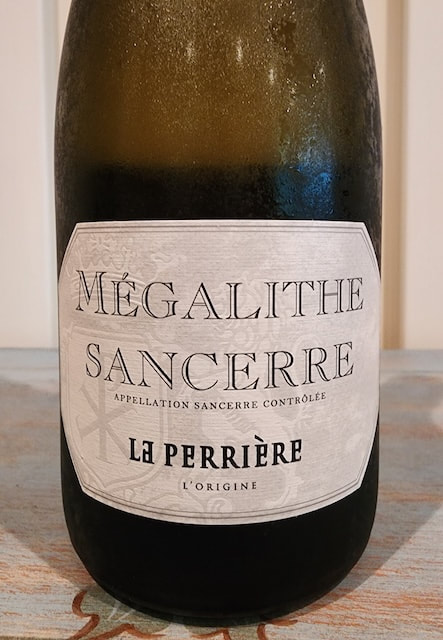









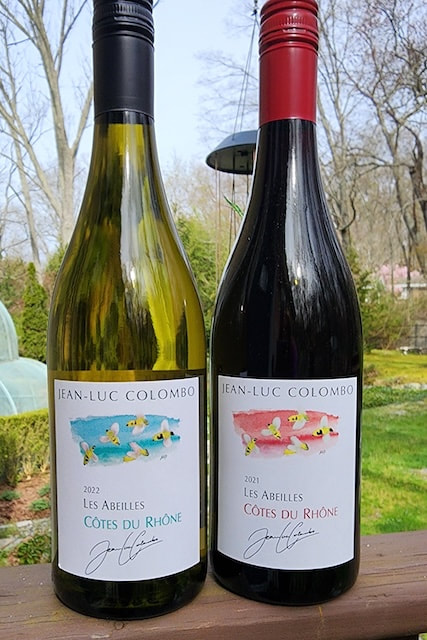
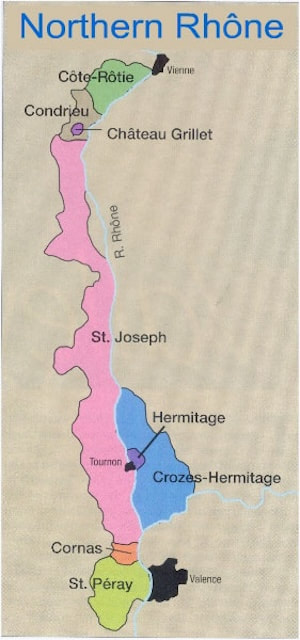
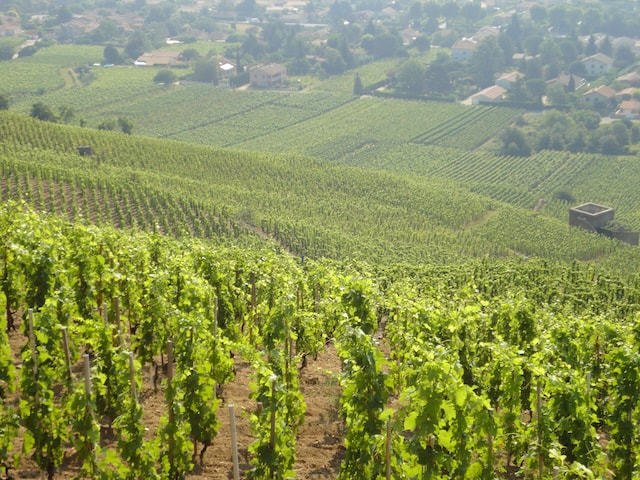
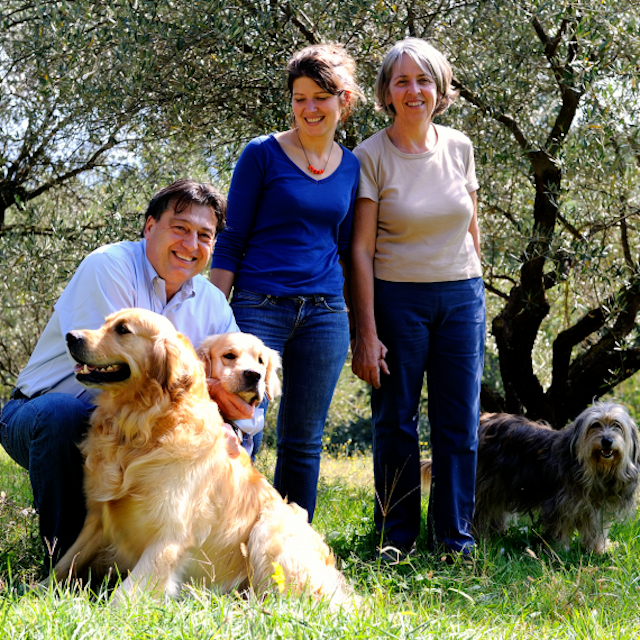
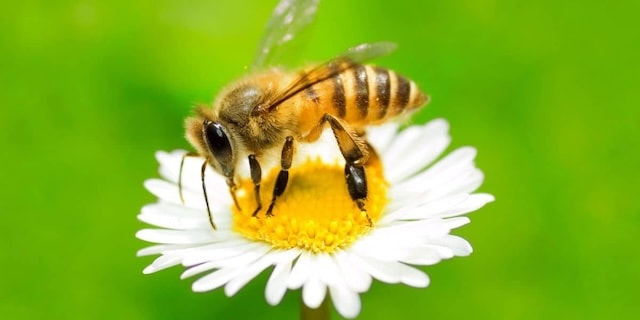
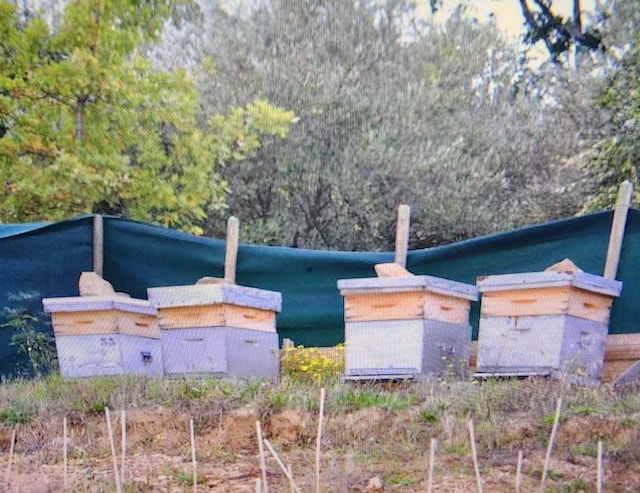
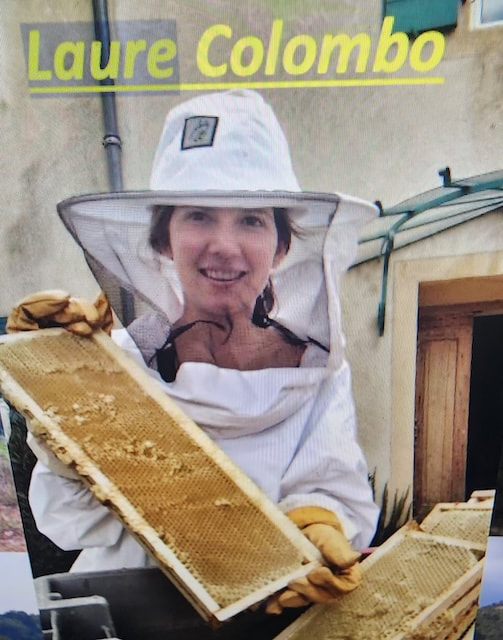
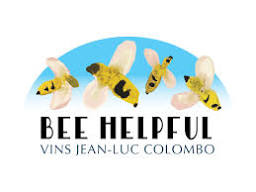
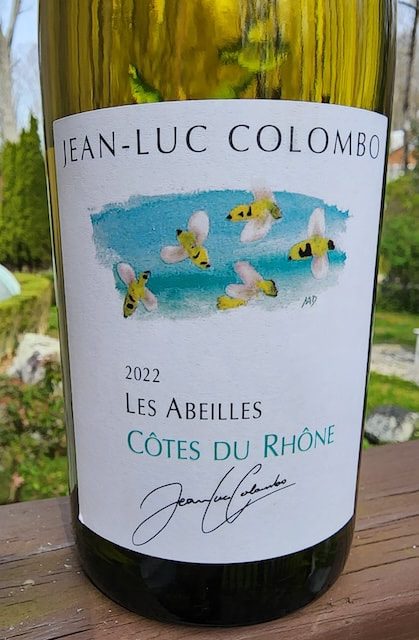
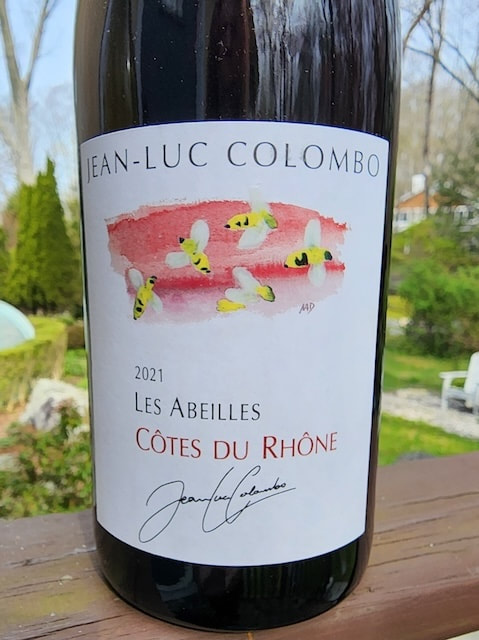
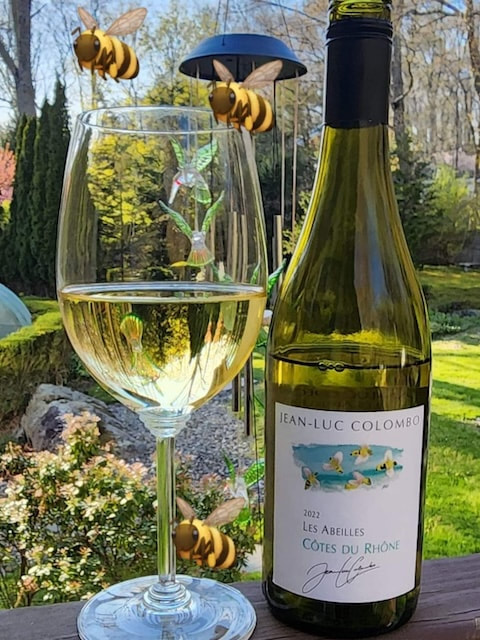
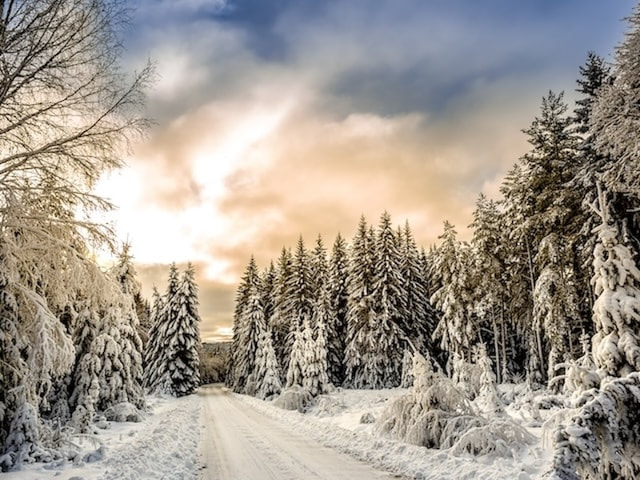
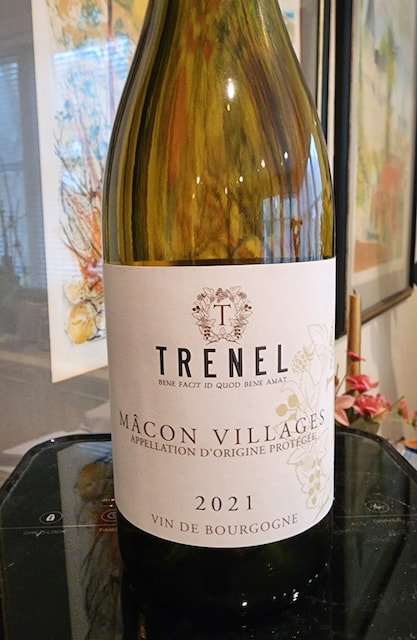
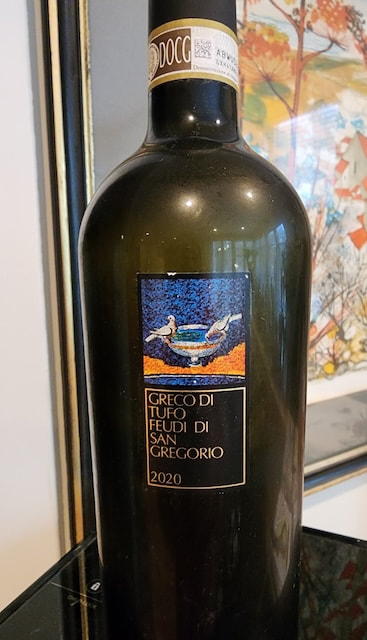
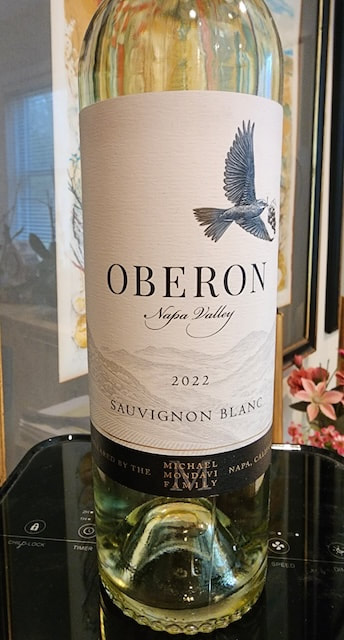
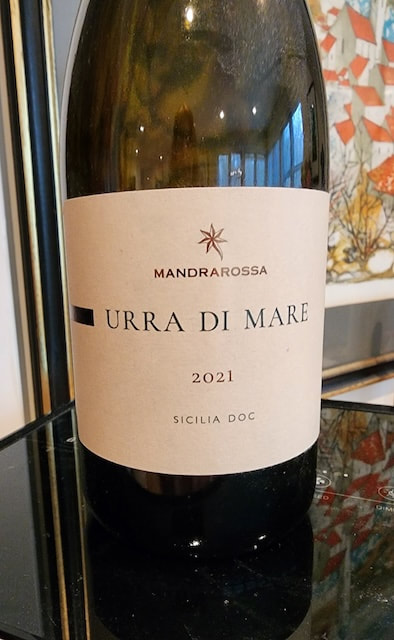
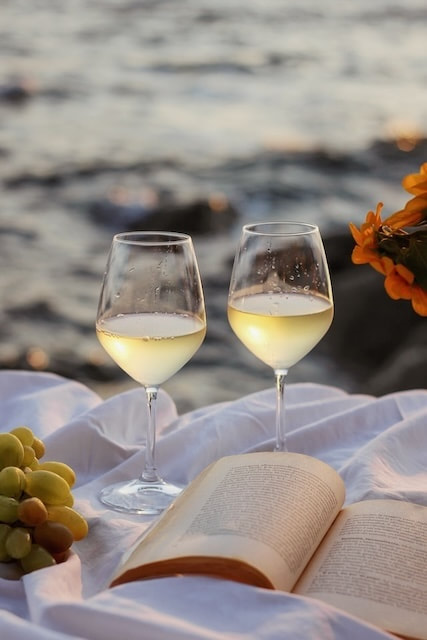
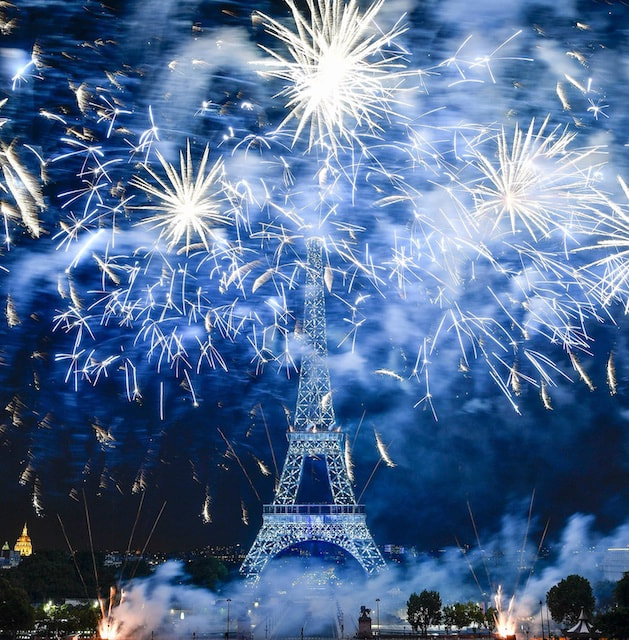
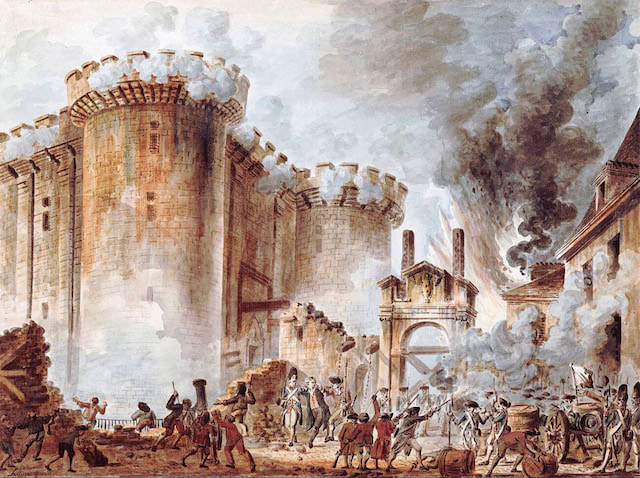
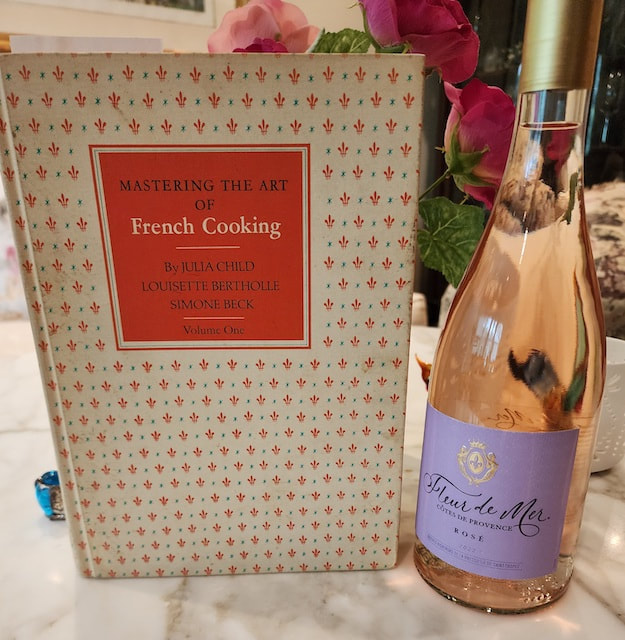
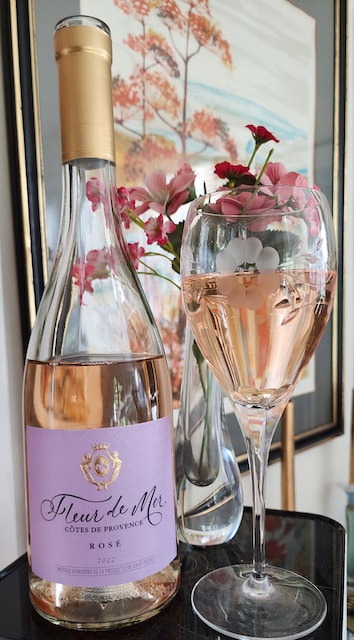
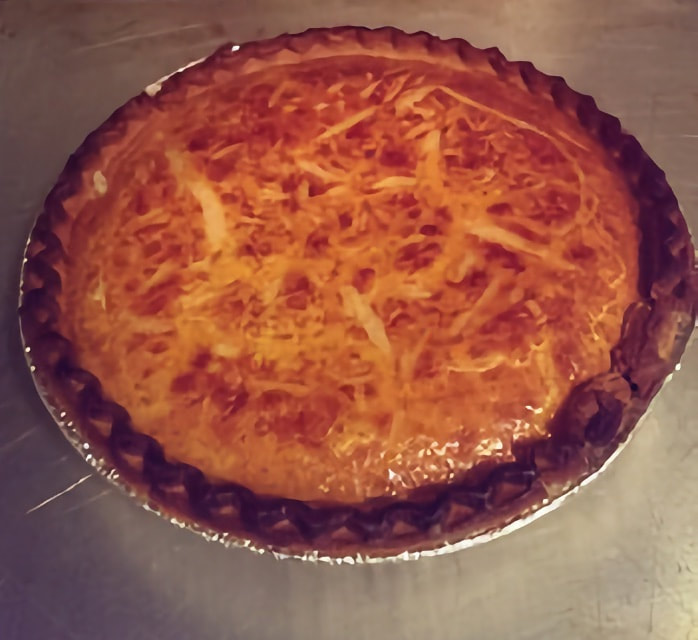
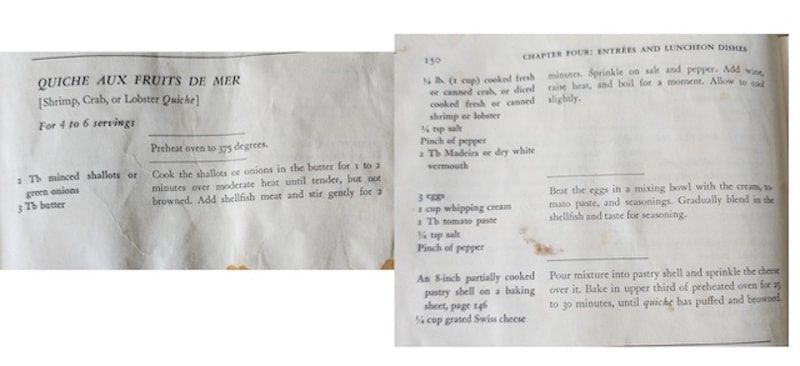

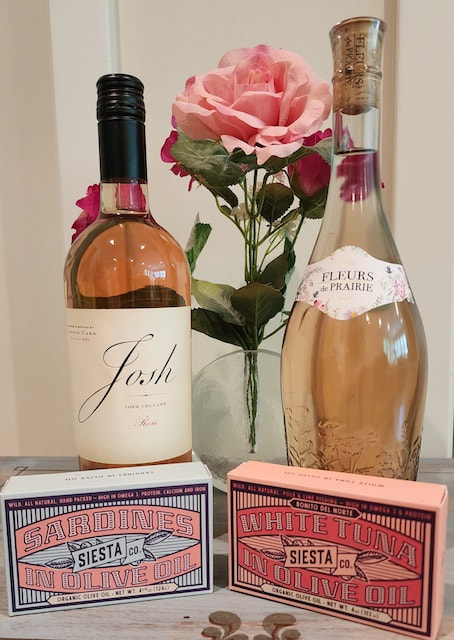
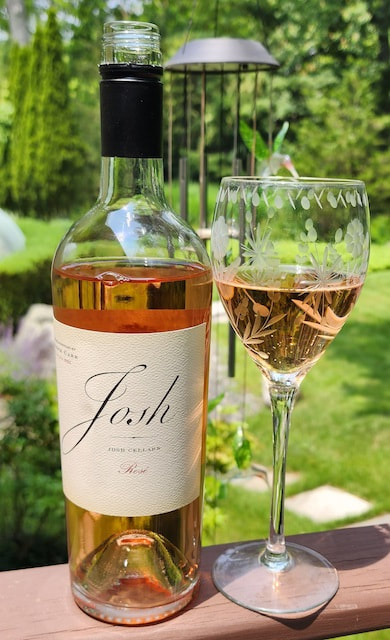
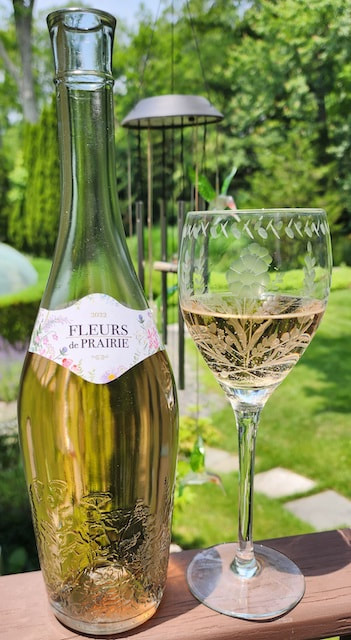
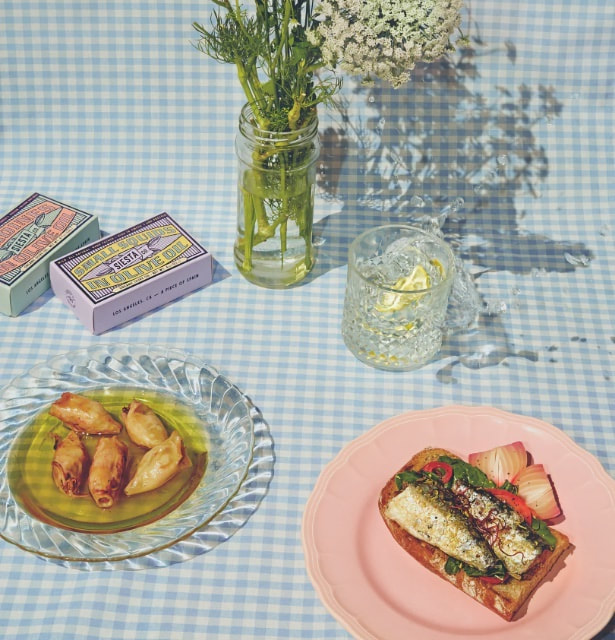
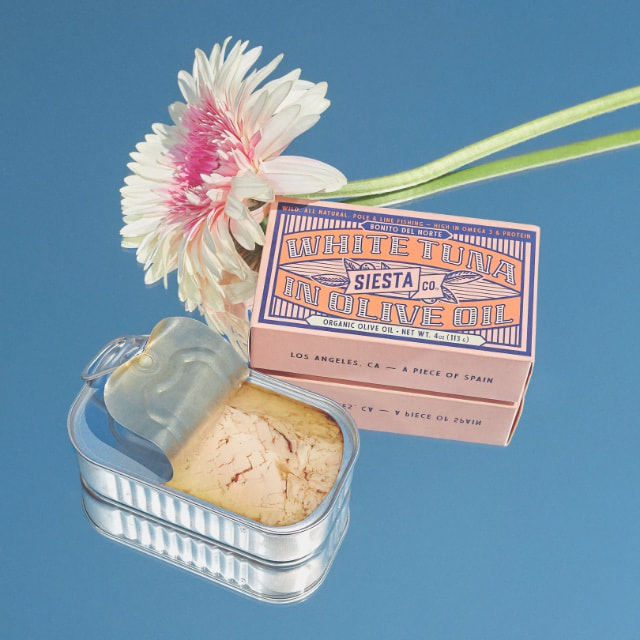
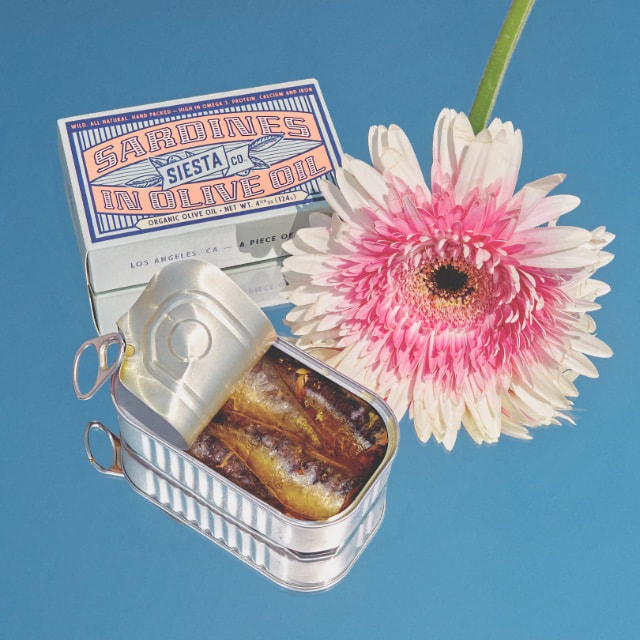
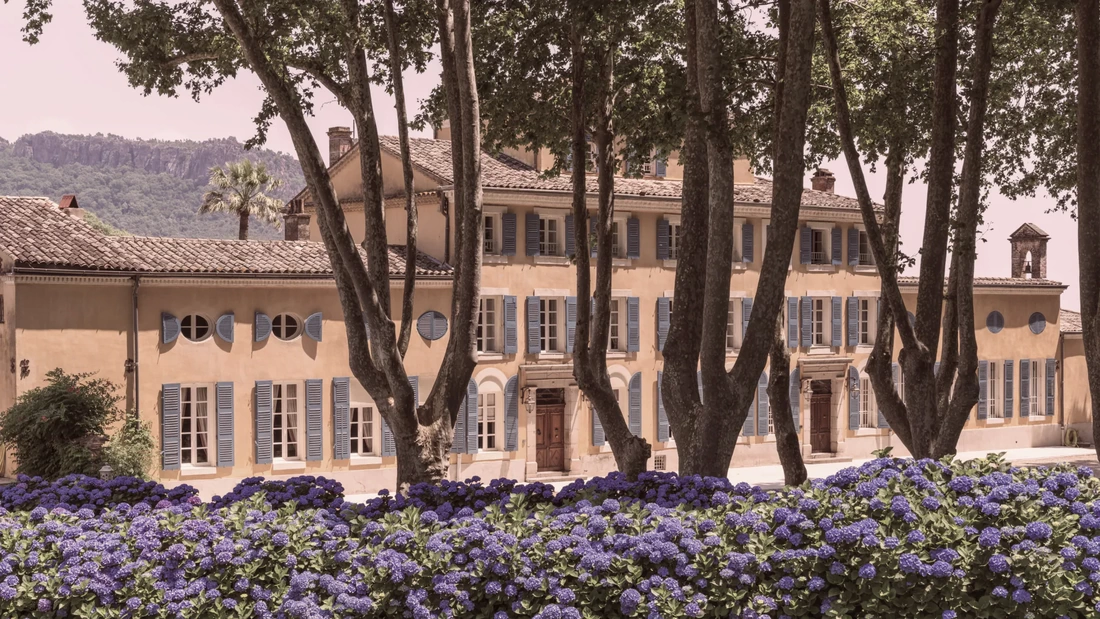
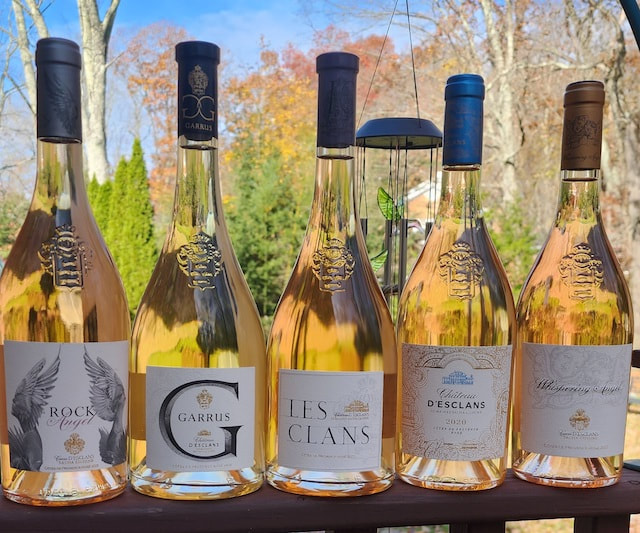
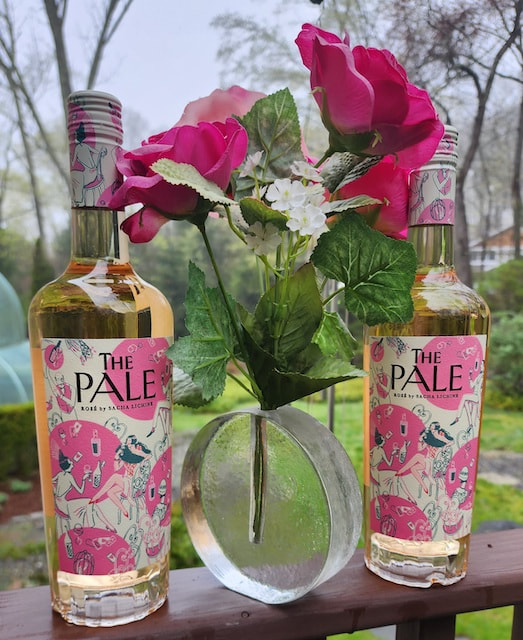
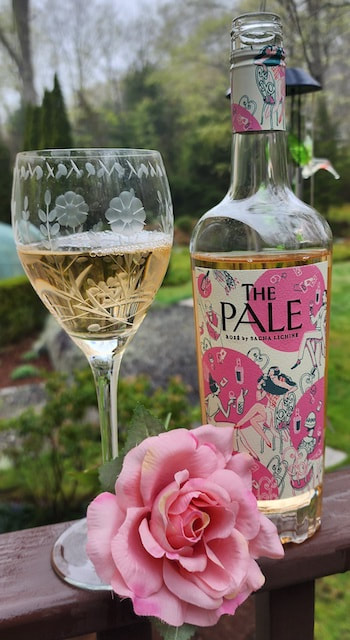
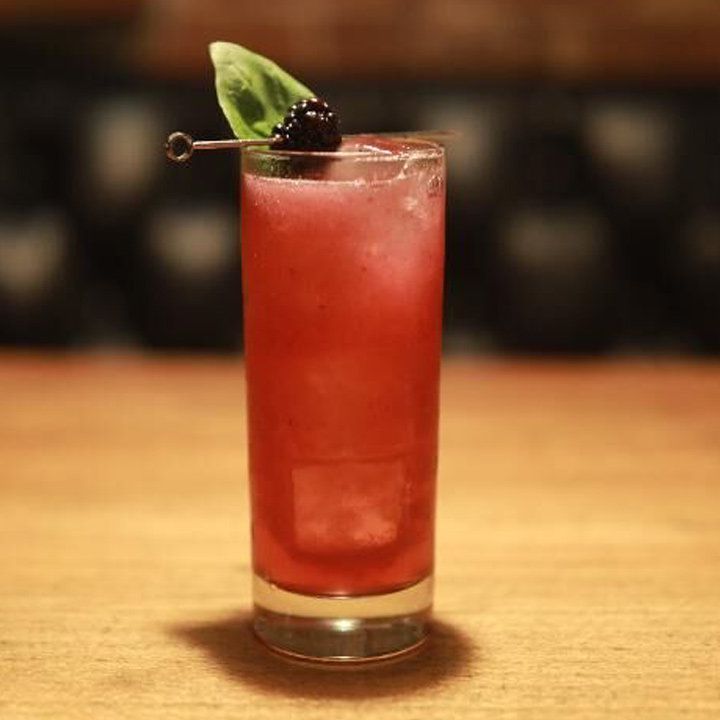

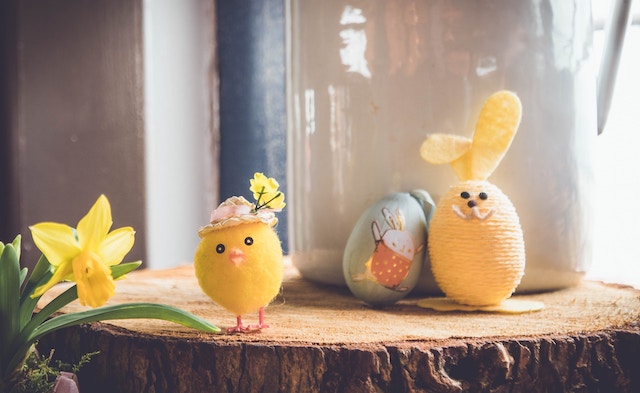
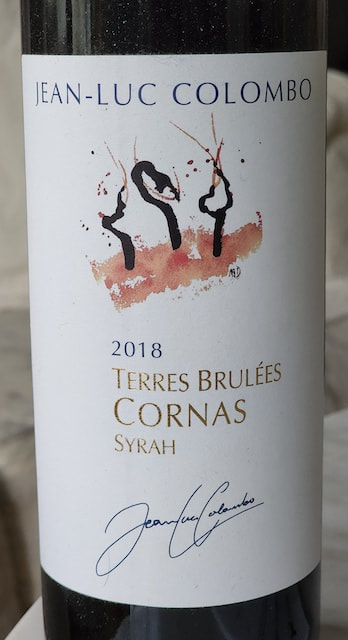
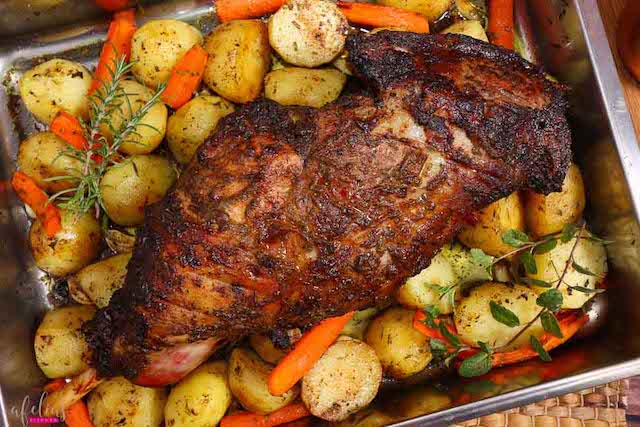
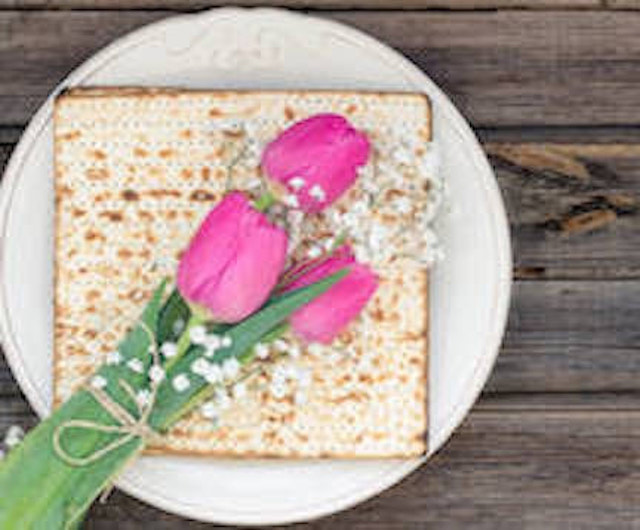
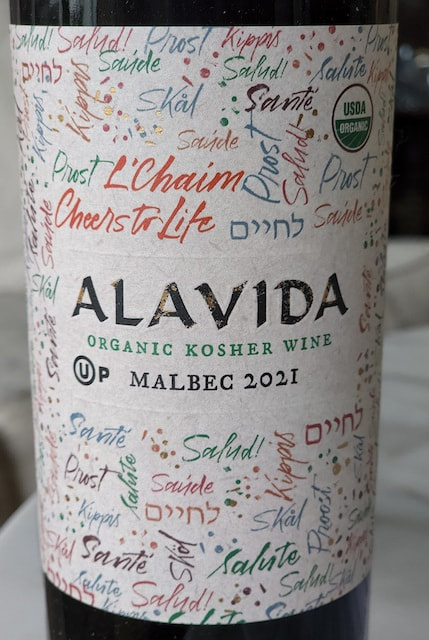
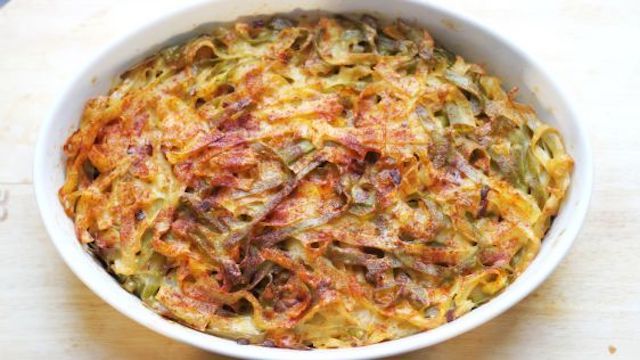
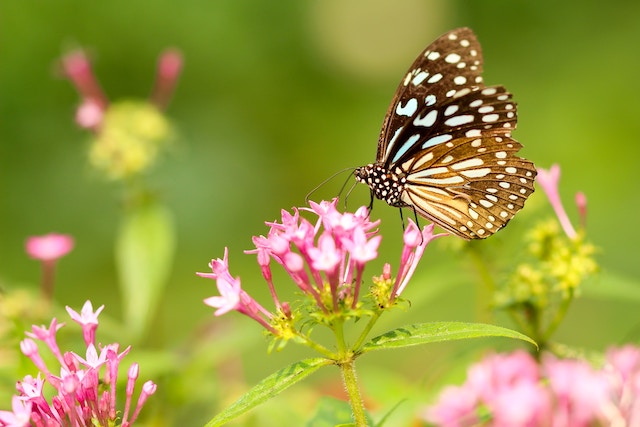
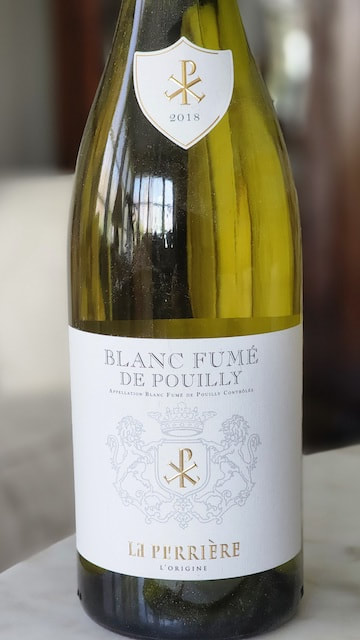
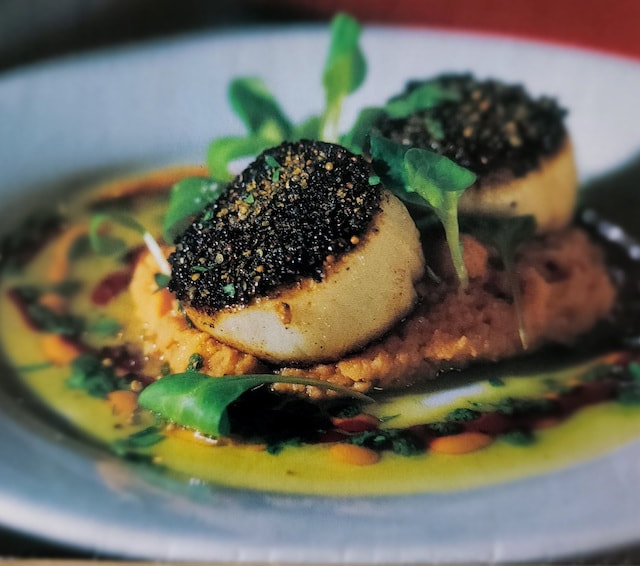
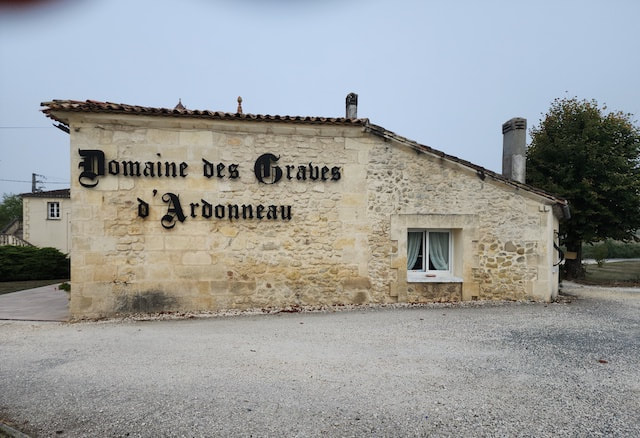
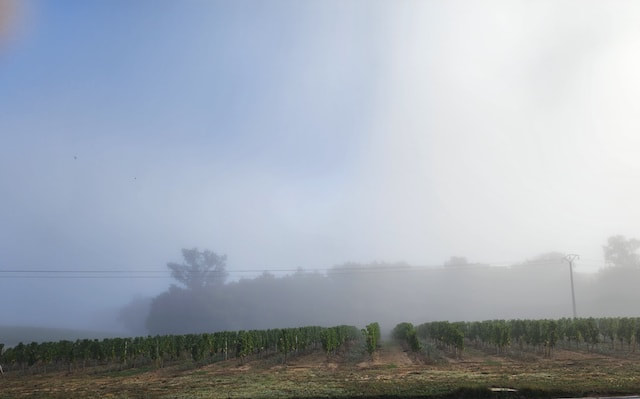
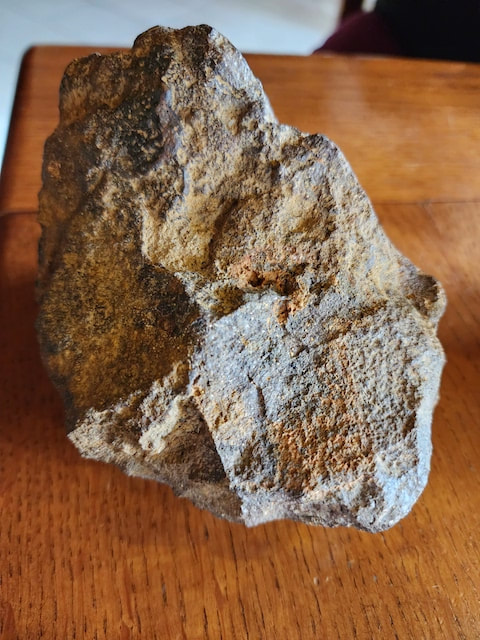
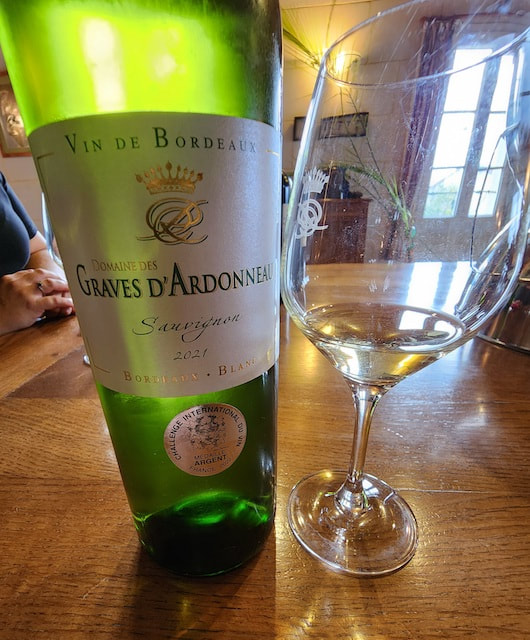
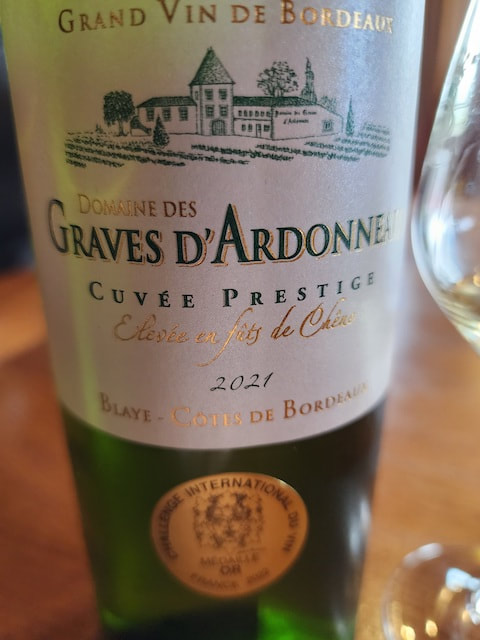
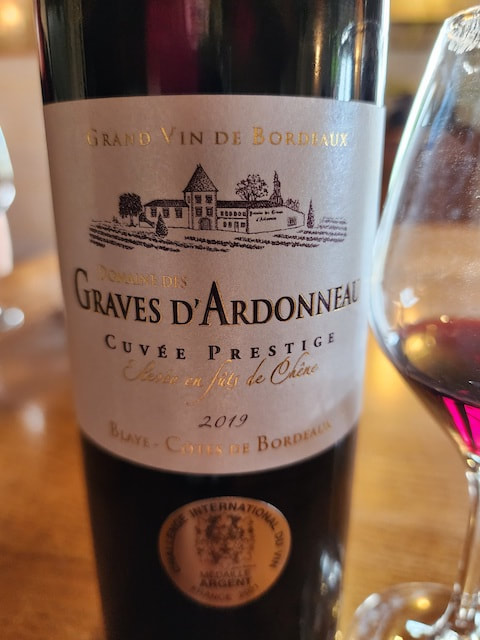
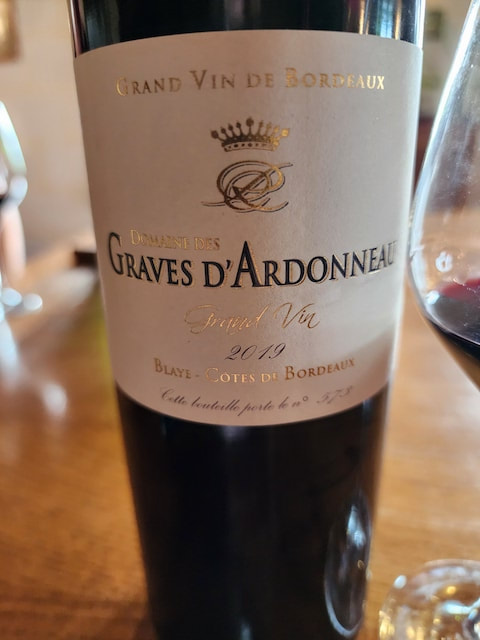
 RSS Feed
RSS Feed